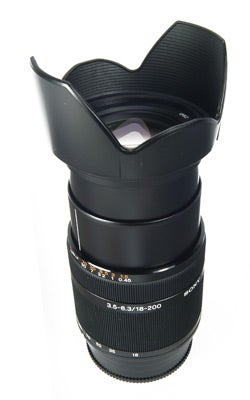It covers an impressive focal range, but is this the ideal Alpha lens?
Sony 18-200mm f/3.5-6.3 Review
Sony Alpha users are particularly spoilt when it comes to choosing lenses for their cameras. There’s the option of third-party manufacturers such as Tamron and Sigma, as well as a wealth of older Minolta lenses available, with Sony currently reissuing or upgrading those same Minolta lenses. For the particularly fussy, Carl Zeiss lenses are also available in the Sony mount, and we expect to see more of those in the next couple of years and beyond.
This lens is made in the old Minolta factory, now owned by Sony, and covers the superzoom focal range of 18-200mm. It is available as a standalone zoom, or as part of a kit with Sony cameras, and is designed as an all-in-solution, providing the user with a wide range of focal lengths, from wide to telephoto, theoretically covering every common subject. Of course, to produce such a lens at a customer-friendly price means there will be compromises, and we don’t expect these lenses to perform as well as individual primes or shorter zooms. Having said this, the outlay is still significant for many, and so the lens should be expected to perform to a certain standard.
This sturdy optic is constructed from 15 elements in 13 groups, and features both aspheric elements and ED (Extra Low Dispersion) glass to reduce distortion and provide clarity throughout the zoom range, claims Sony. As a DT lens it’s designed for APS-C type cameras, but it may also be used on the a900 at a reduced resolution.
Image Quality
Images from the lens are good in terms of colour and contrast, but the extremities of the lens exhibit average sharpness, with fall off towards the edges and corners. Compared to other lenses of this type this is worse than the Sigma equivalent, for example, and on a par with that of Pentax. All results are based on an unsharpened Raw file however, so sharpening post capture will correct this problem somewhat. Fringing is evident throughout the frame and this is backed up by the lab results, with chromatic aberration reaching 2 pixels throughout the aperture range at the edges, and maintaining over 1 pixel in the centre. The lens doesn’t feature any high-tech AF motor, and as a result focuses fairly slowly.
Verdict
While there's no doubt that the focal length of the lens is useful, it suffers compared to shorter lenses. In fact, it falls short when compared with the performance of other manufacturers of similar lenses, such as the Sigma OS version or the Nikon version.





